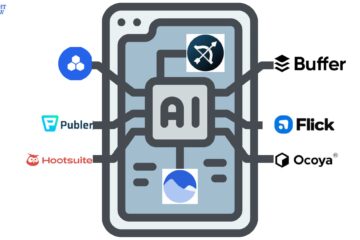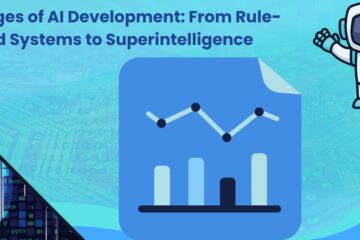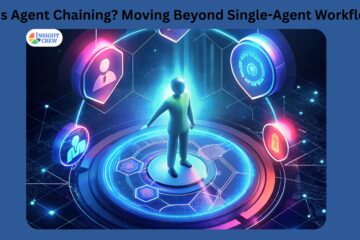Having trouble keeping up with the numerous AI models that appear every few months? It’s difficult to decide between the various models being released by Google, OpenAI, Anthropic, and Meta, all of which are tech giants.
Finding the ideal model for your requirements can be like trying to find a needle in a digital haystack, regardless of whether you’re a researcher, developer, marketer, or just interested in AI.
The top ten AI models for 2025—the ones that are setting the standard across industries—are revealed in this blog. We dissect each model’s advantages, characteristics, and best practices for everything from content production to code writing, from image production to enterprise-grade automation.
How Can the Best AI Model Be Selected?
This brief guide will help you select the ideal custom AI model development, particularly when deciding between GPT, Claude, Gemini, and other options.
- Establish Your Use Case
Content Creation: Seek out leading AI LLM models such as Claude or GPT-4.
Utilise image-based models such as DALL·E or Midjourney when creating or editing images.
Code and data analysis: Models such as Code Llama and GPT-4.5 (Code Interpreter) perform well.
Examine performance in real-time conversations using conversational AI or chatbots (e.g., GPT-4-turbo, Gemini Pro).
- Verify Model Performance & Accuracy
For those interested in technical details, consider benchmarks such as MMLU and HumanEval.
For everyday users:
GPT-4: The best general language comprehension and reasoning score.
Claude 3 Opus: Excellent for understanding long-term context and summarising.
Gemini 1.5 Pro: Proficient in multiple languages and code.
Mistral: Excellent self-hosting open-source alternatives.
- Complement Your Particular Requirements
Claude 3 Opus or Gemini 1.5 Pro (capable of handling 1M tokens) are required for long-context memory (such as when analysing PDFs).
Use of necessary tools (code, browsing, images): The best is GPT-4-turbo (with tools).
Prefer self-hosting or open-source: Make use of models such as Falcon, Mistral, or LLaMA.
The Top 10 AI Models to Keep an Eye on in 2025
This is a list of the best AI models, including ChatGPT. Let’s talk about each model individually:
- GPT-5
Launched in 2025, GPT-5 is OpenAI’s most sophisticated multimodal AI model. It allows for multilingual communication in over 60 languages, real-time reasoning, visual interpretation, and the smooth integration of text, audio, image, and even video understanding into a single model. GPT-5 is built to provide human-like, context-rich interactions and reacts remarkably quickly and accurately.
GPT-5 can process and produce text, audio, images, and videos for a variety of use cases thanks to its improved multimodal capabilities. GPT-5 is a strong, internationally adaptable AI for both home and business use thanks to its increased language support and sophisticated reasoning capabilities.
- Gemini 2 Pro
As of 2025, Google’s most sophisticated AI model, Gemini 2.5 Pro, is built to manage challenging tasks in a variety of domains. It is a preferred tool for developers, researchers, and businesses due to its superior reasoning, coding, and multimodal understanding capabilities. Gemini 2.5 Pro raises the bar for AI performance and dependability with its expanded capabilities.
Its exceptional coding skills enable developers to optimise workflows and debug software while transforming, editing, and creating aesthetically rich web applications. The model is also very good at producing complex code. For a more comprehensive user experience, its multimodal capabilities also incorporate text, code, images, and other media.
- Sonnet by Claude 3.7
Anthropic’s Claude 3.5 Sonnet is an AI model that is highly proficient in a number of areas, such as coding, visual comprehension, and natural language processing applications. It is positioned as a mid-tier model in the Claude 3.5 series and provides a cost-effective and performance balance, making it appropriate for a variety of applications. It can effectively handle lengthy discussions and challenging tasks thanks to its 200,000 token context window.
Anthropic’s most recent model outperforms its predecessor, Claude 3 Opus, in sophisticated reasoning and coding. It is perfect for sectors like retail and logistics because of its improved visual processing, which enables it to decipher charts, graphs, and even transcribe text from hazy images.
- The DeepSeek-R1
The Chinese startup DeepSeek, which is well-known for its sophisticated reasoning skills and affordable design, created the DeepSeek-R1 custom AI model. DeepSeek-R1, which was introduced in 2025, has attracted a lot of interest due to its capabilities. models that are developed at a fraction of the cost, such as OpenAI’s GPT-4. Notably, DeepSeek-R1 was recognised by Microsoft CEO Satya Nadella as the first AI model that could match OpenAI’s capabilities.
Strong reasoning skills, particularly in logical and multi-step problem solving, are provided by DeepSeek-R1. It also supports multiple languages, which makes it helpful for international communication and content. Finally, it is open-source and developer-friendly, making it perfect for custom fine-tuning and application integration.
- OpenAI o1
OpenAI O1 exhibits deep, methodical reasoning, which sets it apart from its predecessors that prioritised quick responses. This makes it incredibly skilled at solving challenging problems in science, math, and programming. This “chain-of-thought” method improves the model’s ability to solve complex problems by simulating human-like analytical processes.
The O1 model possesses sophisticated reasoning skills and breaks down complex problems using a “chain-of-thought” method to enhance accuracy. Additionally, OpenAI has improved its security measures, guaranteeing better alignment and resistance to abuse. O1 is now secure and powerful for enterprise-level applications thanks to these enhancements.
- OpenAI o3-mini
Introduced in early 2025, the OpenAI o3-mini is a compact yet powerful AI model designed for tasks that require strong reasoning skills, particularly in the STEM (science, technology, engineering, and mathematics) domains. O3-mini, which was created to be more economical and efficient than its predecessors, has better accuracy and quicker reaction times, making it appropriate for both developers and individual users looking for a dependable AI tool for challenging problem-solving.
To strike a balance between speed and depth, users can select from low, medium, or high reasoning levels on the platform. Function calling, structured outputs, responses, and developer messages are among the developer-friendly features it offers for simple integration. It performs better than O1-Mini and responds roughly 24% faster. There has also been a notable improvement in accuracy in subjects like science, math, and coding.
- Meta AI (Llama Series)
An open-source family of potent AI models for researchers and developers is Meta’s LLaMA (Large Language Model Meta AI) series. High performance is provided by the most recent, LLaMA 3 (2025), which is well-liked by people who wish to develop or improve AI applications without depending on closed APIs. Because of their efficiency optimisation, LLaMA models can be deployed on-device or in the cloud.
For developers who want to fine-tune models or self-host, Meta AI is perfect. Additionally, it is resource-efficient, supports a variety of applications, including chatbots and summarisation, and competes with GPT-level models.
- Google Gemini
Google DeepMind created Google Gemini, a multimodal AI model that can process and produce content in a variety of media, such as text, photos, audio, and video. The most recent version, Gemini 1.5 Pro, as of 2025, demonstrates notable improvements in efficiency, multimodal capabilities, and long-context understanding, making it a strong rival to models such as GPT-4 and Claude 3.
Gemini 1.5 Pro can process large datasets, such as books, codebases, or lengthy media content, because it has an extended context window of up to 1 million tokens. It is excellent at handling text, images, audio, and video in multimodal processing. It is also deeply integrated with the Google ecosystem, which includes Drive, Docs, Android, and Gmail.
- BERT
Google’s BERT NLP model revolutionised the way machines comprehend human language. Despite being published in 2018, its fundamental architecture, which underpins many contemporary AI systems, makes it extremely relevant in 2025. Because BERT can comprehend word context in both left and right directions, it performs exceptionally well on tasks like sentiment analysis, question answering, and language inference. It frequently serves as the foundation for specially tailored models in sectors like healthcare, law, and finance.
Bidirectional context understanding provided by this model allows for deeper language comprehension. It can be readily adjusted for particular NLP tasks and has already been trained on large text corpora. It is widely used in many industries because it is open-source. It also has a large community following, which promotes ongoing advancements and practical uses.
- PaLM 2
Google’s sophisticated language model, known as PaLM 2 (Pathways Language Model 2), was introduced in 2023 and is still in use in 2025 for reasoning, code generation, and multilingual tasks. PaLM 2 is still a good AI model for users of Google’s older AI services, such as Bard (pre-Gemini) and Workspace AI tools, even though Gemini models have replaced it. It is quick, lightweight, and well-suited for tasks like Q&A, translation, and summarisation. With support for more than 100 languages, it’s perfect for use cases involving AI writing assistant software, like those on Spotsaas, as well as multilingual workflows and worldwide content creation.
This model is unique in that it supports more than 100 languages, which makes it perfect for multinational teams. It is very good at accurately solving math, logic, and reasoning problems. It is also optimised for Google Workspace integration, which includes Docs, Gmail, and other necessary tools.
Conclusion
AI models will have developed, grown more potent, and become more widely available than in the past. Every model has a distinct function, whether it be deep language understanding, code generation, or content creation. These range from sophisticated language models like GPT-4 and Claude 3 to specialised tools like Midjourney and BERT. In order to tailor these models for particular use cases and guarantee improved performance and relevance, businesses are now also collaborating with AI development firms that are constantly improving.
Your unique use case, performance requirements, and financial constraints will all influence the custom AI model you choose. You can gain a competitive advantage by keeping up with the most recent developments. There is an AI model out there made to enhance your work, regardless of whether you are a developer, entrepreneur, or creative.


